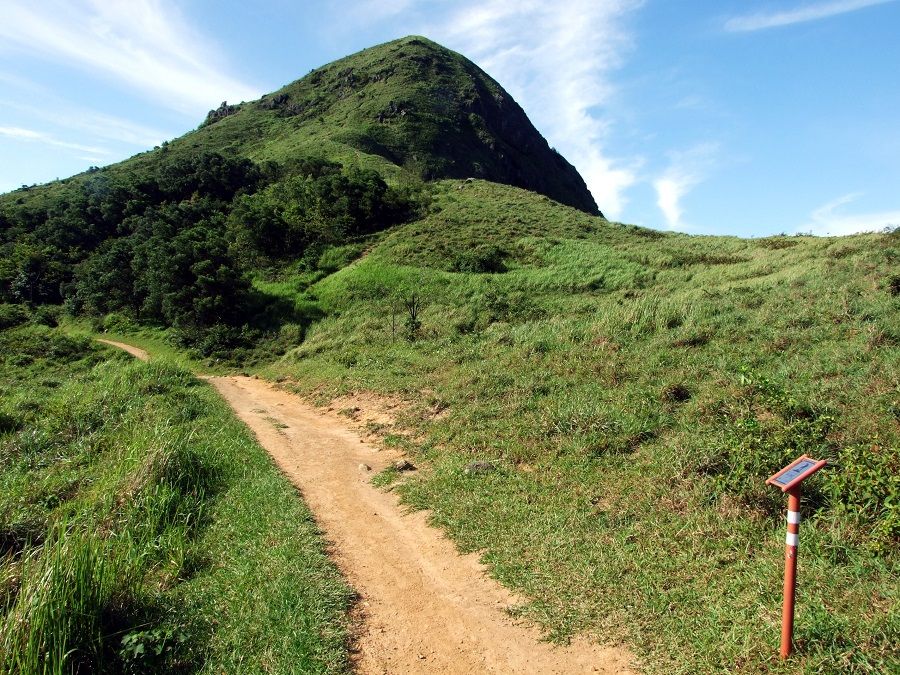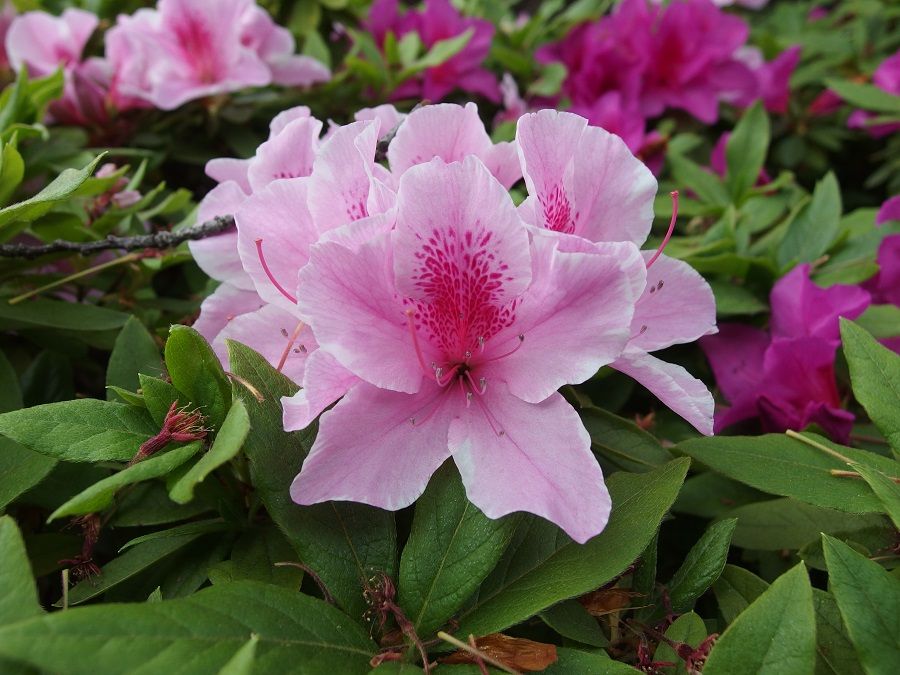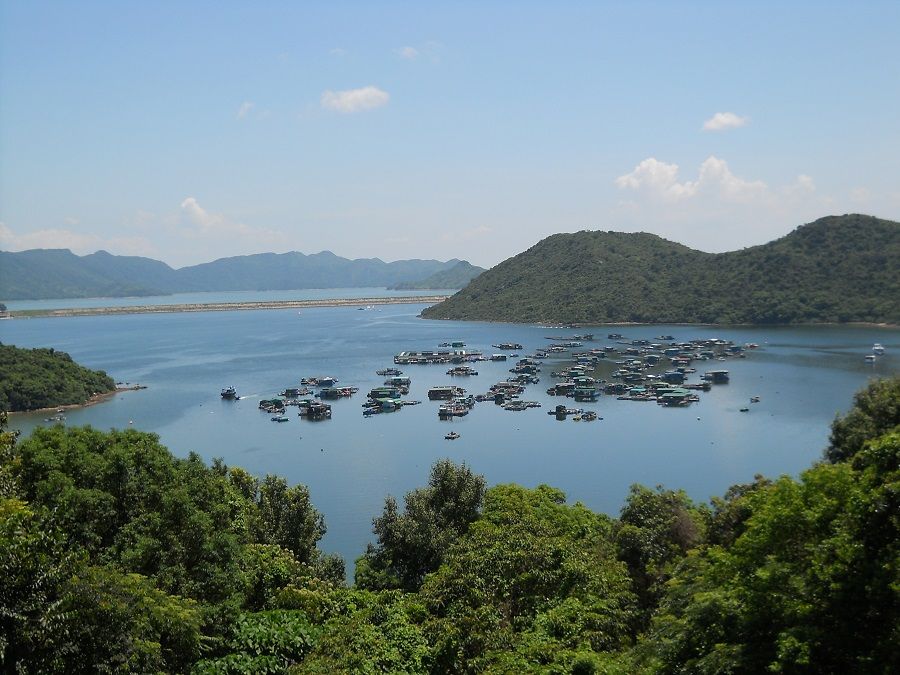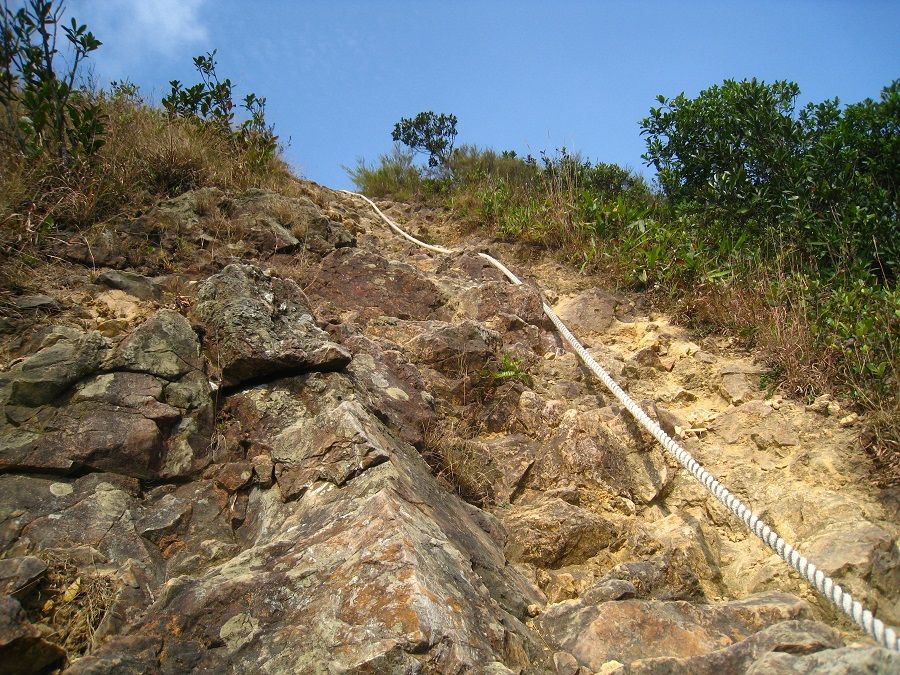I could be a bandit chief on Ma On Shan: Hiking in Hong Kong [Part 6]

The village seemed abandoned, yet at its entrance stood a noticeboard with recent government announcements. An intoxicating aroma of lush thyme wafted through the vacant, silent village.
I couldn't help but recall encountering a similar scene in the Appalachian Mountains in eastern America 30 years ago. There, among a thick undergrowth of weeds, lay the remnants of collapsed houses and a smattering of wooden buckets and corroded iron pipes. Coupled with an enchanting scent in the air, the atmosphere was somewhat eerie. They were all remnants of America's Prohibition Era workshops where criminals made liquor. Ravaged by time and weather, the decrepit walls and brewery stills still bore traces of the dregs of alcohol-making. Recalling these scenes amid greenery, I had a sense of nostalgia.

It was probably just 20 or 30 years ago that this village on Ma On Shan (马鞍山) was abandoned. After the iron mine closed down, one by one, villagers left the place, leaving behind empty houses, silently guarding the sweet scent of flowers carried by the wind.
Healing herbs in the wild
Ascending to higher ground from Ma On Shan Village, I passed the ruins of the mine, seeing four to five middle-aged people out foraging. Initially, I thought they were picking a vegetable like shepherd's purse, wild amaranth or Chinese fevervine, but upon a closer look, I was wrong. The plant was dark green in colour, its leaves fresh and thick; surrounding those leaves were several white flowers.
I asked for its name but the locals replied with a local name that I did not understand. They also explained that the plant is a type of wolfberry vine that is excellent for boiling soup and good for health. Seeing how the locals picked a whole bunch with happy smiles, they must be thanking spring for blessing them with plentiful stock of this plant that could make at least a week's worth of tonic soup.

When I scaled Ma On Shan four to five years ago, I took the MacLehose Trail and climbed the Pyramid Hill as well as The Hunch Backs. It was only after I was exhausted from walking such a long way that I arrived at Sai Kung.
Traumatised about going through such a tiring journey again, I henceforth always avoided Pyramid Hill, choosing a path that was less arduous but no less beautiful instead. As I descended the hill from Tai Shui Tseng, I would admire from above, the numerous islands at Sai Kung Bay, as well as the boats along the shore before reaching Sai Kung via the Po Lo Che neighbourhood.
But I still missed the howling winds at the hilltops; I still remembered the excitement of treading those hill ridges as I took in the views of Sai Kung Bay to the east and Tolo Harbour to the west. It seemed as if I was entering the poetic realm of immortality, revelling in the towering mystique of the mountains; indeed it felt like I had just accomplished a commendable feat comparable to the conquest of Mount Everest.
... as if God created the universe in such a way that it could hide wild beauty in the deepest valleys and protect it from man's vulgar pursuits.
Nature's beauty kept away from the ugly world
Thus in early spring, we climbed Pyramid Hill and went deeper into Ma On Shan. To my surprise, we were in time to catch the wild azaleas blooming on the hills. Clusters of pinkish white flowers with their quiet demeanour swayed in the wind, exuding their charm.
That experience was uncanny. Not only was it surprising but it also had a treacherous and mysterious vibe, as if God created the universe in such a way that it could hide wild beauty in the deepest valleys and protect it from man's vulgar pursuits. Deep in the mountains, flowers bloom and wither as the years quietly pass by.

We lived at the foot of the hill yet never knew that hidden within it lay beautiful flowers as elegant as the beauty Xi Shi. These flowers bloomed in great numbers, all over the mountains. The last time I passed by this place was during midwinter. It was not too chilly, but as the winds blew past, the fauna curled up in the cold, the sight of them nothing like a typical scene of spring.
People broke out in mountain songs. Though they sounded out of tune, their voices were loud and strong, as though they were making a firm promise to visit the wild azaleas again next year.
When he felt like it, he could venture across from Tiu Shau Ngam, go eastward towards the villages of Sai Kung, rob those houses and grab a few local girls to be his concubines.
Imagining a bandit chief
After reaching the peak of Tiu Shau Ngam, I realised in awe that I could see before me a panoramic view of Tolo Harbour, all the way from Sha Tin to Tolo Harbour, and even extending to Tolo Channel. In the northern direction were the continuous ridges of Pat Sin Leng and the vast Plover Cove Reservoir.

Rolling lush mountains were reflected in the gentle ripples of Tolo Harbour and the mirror-like Plover Cove, and the interplay of light and shadow, movement and stillness echoed each other, creating a captivating and unforgettable sight.
If it was during the olden times, you could build a fortress here, within which the Bandit Chief of the Mountain could rest peacefully and enjoy his meals, living a happy life. When he felt like it, he could venture across from Tiu Shau Ngam, go eastward towards the villages of Sai Kung, rob those houses and grab a few local girls to be his concubines. If the defence of Sai Kung was strengthened, he could shift his target. On the northwestern side of Tiu Shau Ngam, he could harass the residents of Ma On Shan, and loot their cows, goats and food, being utterly reckless and insanely happy.

All of a sudden, I heard my pals shout in chorus, "Hey, what are you daydreaming about? We've called you so many times but you didn't respond!" Ah, it was time to go down the mountain.
This article was first published in Chinese on United Daily News as "馬鞍山春萌" in 2012.
Related: Hong Kongers are fortunate people: Hiking in Hong Kong [Part 1] | Seeing California from Hong Kong's shores: Hiking in Hong Kong [Part 2] | The allure of youth on the mountain trails: Hiking in Hong Kong [Part 3] | Escaping the city to join the Eight Immortals: Hiking in Hong Kong [Part 4] | Every plant a medicine: Hiking in Hong Kong [Part 5]
